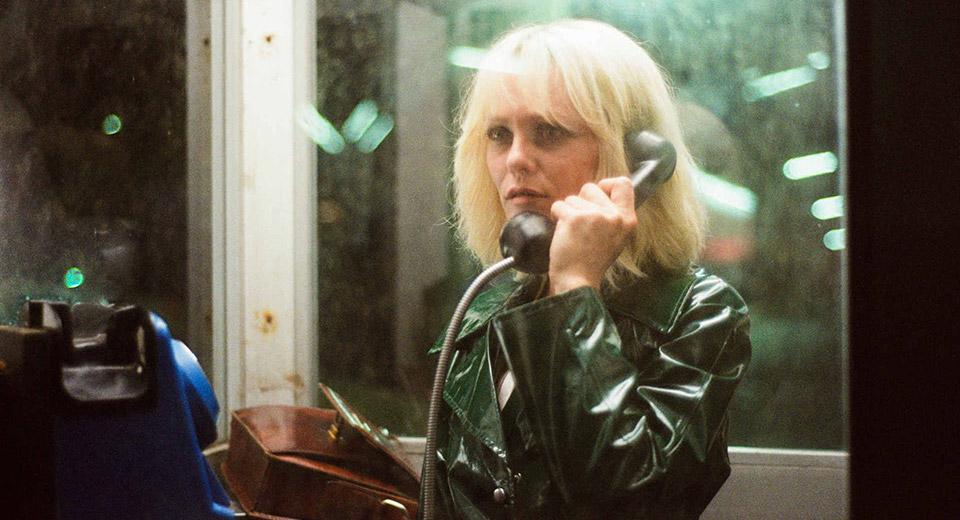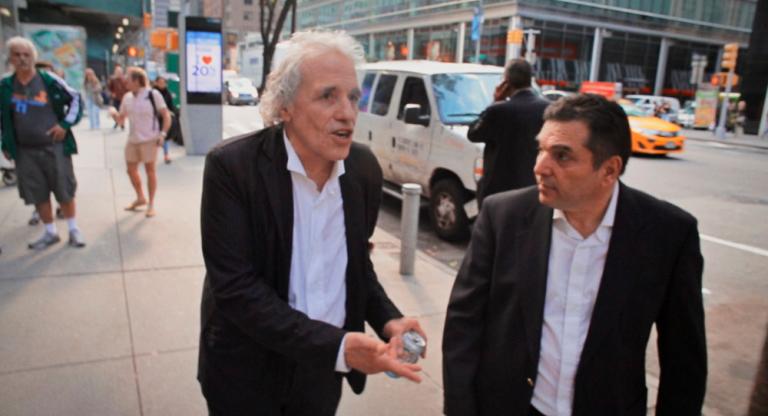
If the first ten minutes of a movie build to a slasher-sex death by convertible Swiss Army dildo, the rest of it has to deliver. Yann Gonzalez's Knife + Heart does so, even poignantly. This week a 35mm print screens at MoMA, and it's a rare opportunity to see it at its best: Gonzalez takes its 1979 period setting as an opportunity to sink into sensuous giallo gel lights and revel in the physicality of the medium. The latter interest goes beyond aesthetics; staging its drama around a pre-VHS porn studio, the film often returns to the work of personally rearranging, manipulating, and even defacing celluloid by hand.
The head of this studio is a prolific gay porn producer named Anne (Vanessa Paradis), who's deeply rattled by a tempestuous breakup with her longtime editor Loïs (Kate Moran). Amidst this turmoil, Anne is also in a slasher movie. As a leather-masked killer targets Anne's actors in gruesome fashion (think The Driller Killer with a pinch of Dennis Cooper), she ventures further and further afield—and encounters surprises aplenty—to unmask the culprit. She's first driven by traumatic dreams of a man running from a burning shed, unsettlingly color-inverted, if sometimes oddly beautiful.
Anne's psyche, under strain from heartbreak and alcoholism, isn't so much a cipher for the film as its setting; the naturalism of Paradis's performance keeps this from feeling baroque. Gonzalez centers on the link between desire and fantasy: how much of our love and lust is one-directional or unsustainable, and to what extent we crave those illusions anyways. These ideas are manifest in Anne's fits of denial, but also in her workplace, as an industrialized site of erotic construction. After a scene plays out from one of her films—sometimes gauzy and dreamlike, sometimes cheesy, but always based on events from her own life—the dream fades, and focus shifts back to the actors' meager paychecks and all of the workaday aspects of the shoot. The '70s period setting is also a seductive feat of design, but pointedly on the precipice of the AIDS crisis, with the film's violence acting as a harbinger of the devastation.



